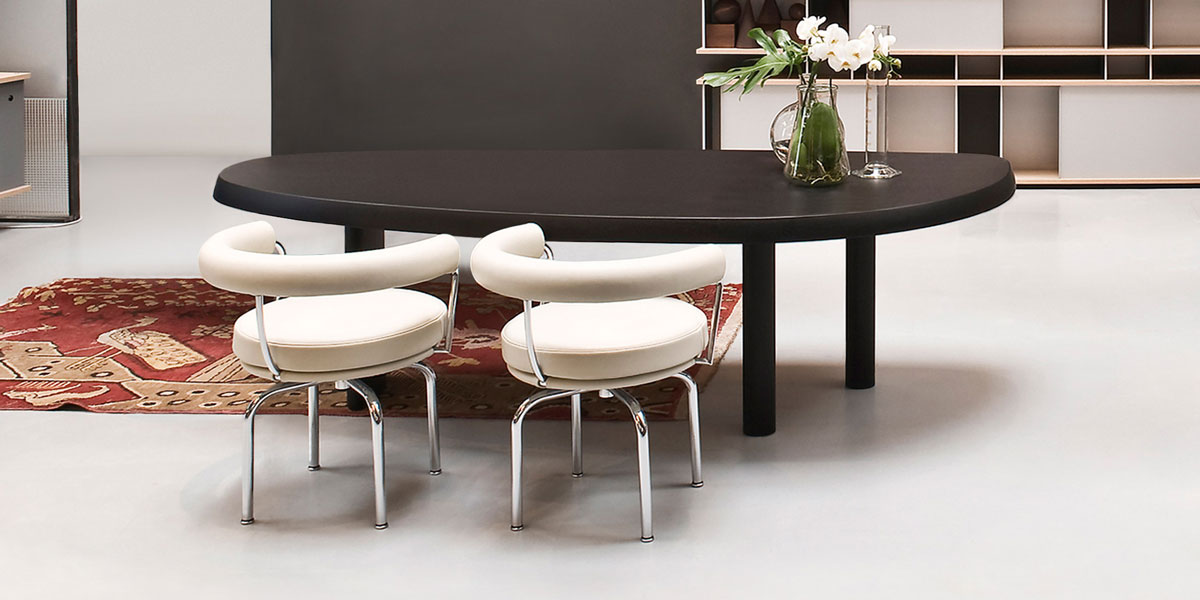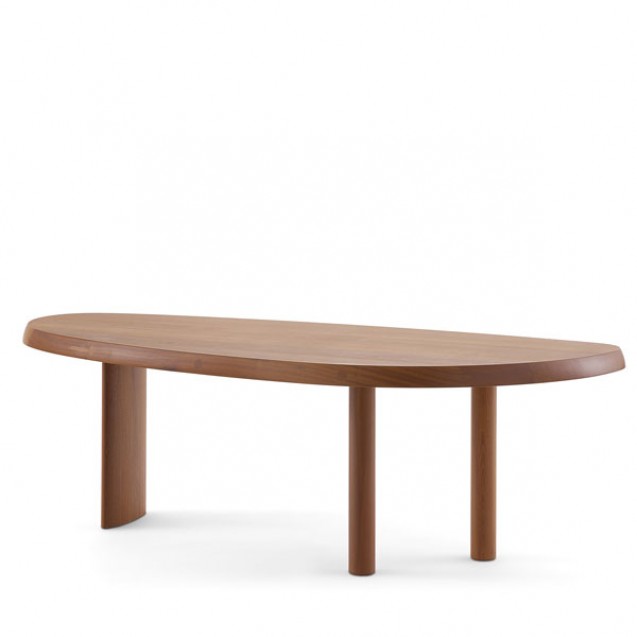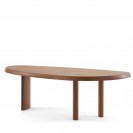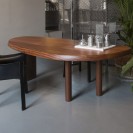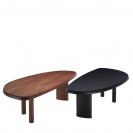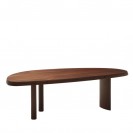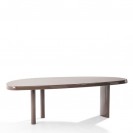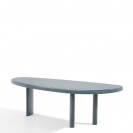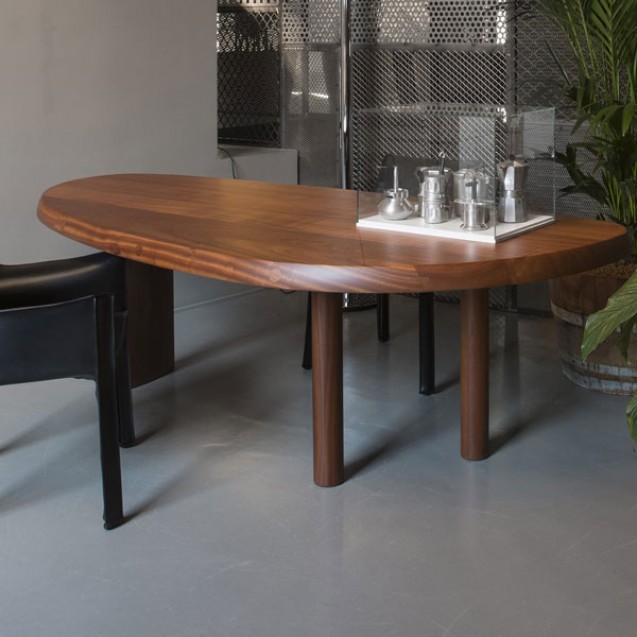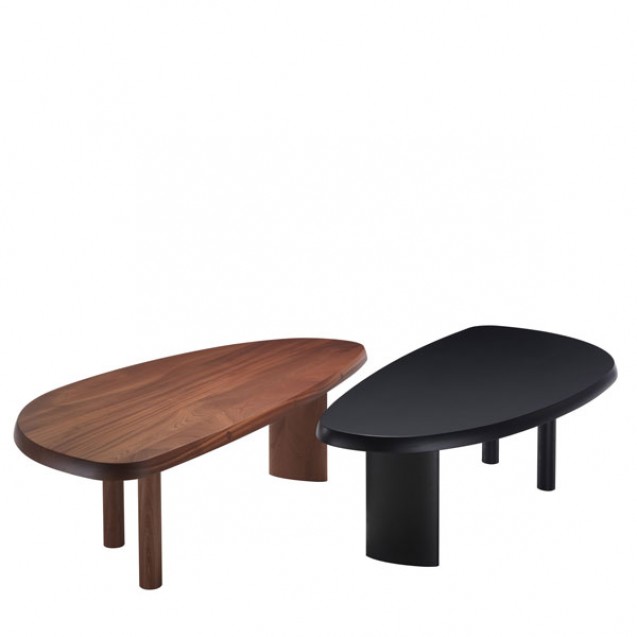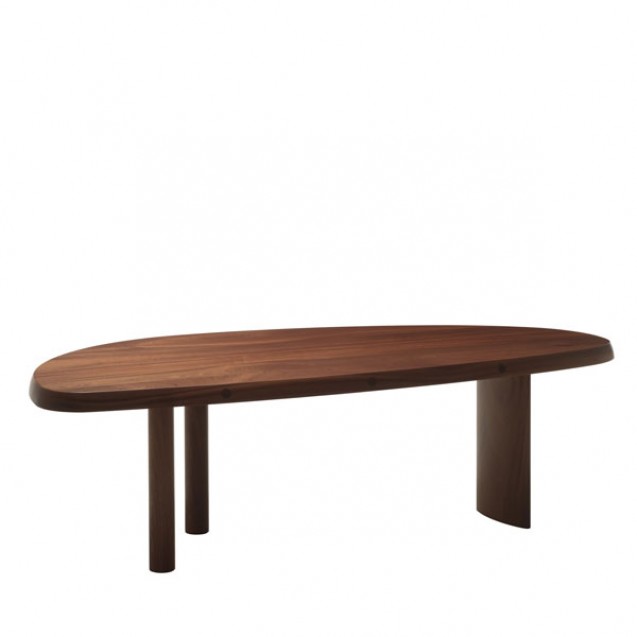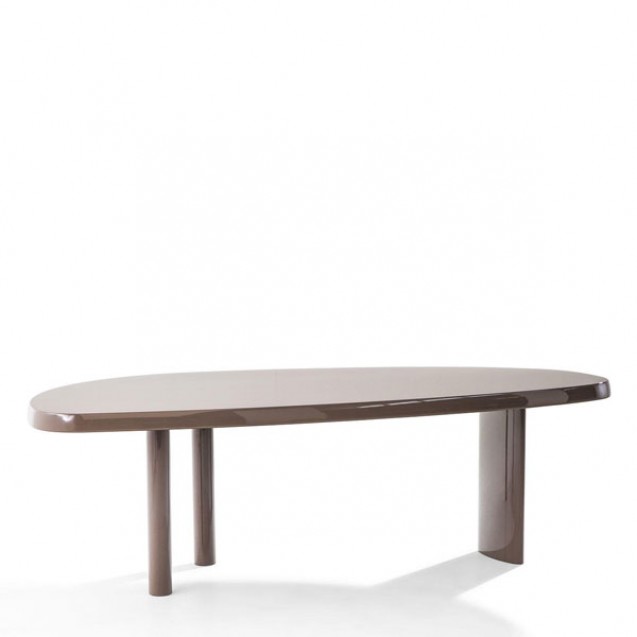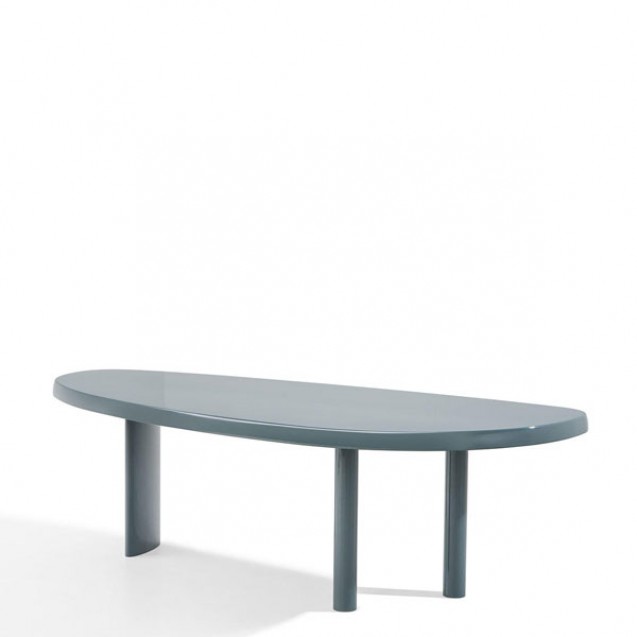525 Table En Forme Libre
Charlotte Perriand started work
on the tables en forme libre in 1938.Originally intended for her own atelier in
the Montparnasse area of central Paris, they went into production courtesy of
Galerie Steph Simon at the end of the 1950s. All rounded edges, and
asymmetrical lines, these tables are perfectly suited to accommodating up to
eight guests in small spaces. The table has three legs: one is oval with a
wider footprint, the other two are smaller and are cylinder-shaped. In 2011,
Cassina re-issued this piece, reducing the width of the legs to offer more
space and allow guests to sit closer to each other on convivial occasions.
Supplied in solid oak, the table also comes with a gloss or matte varnished
finish, in the Cassina Moodboard colours. The table-top is composed of wooden
staves that slot into each other, the joins being seen at the ends, testifying
to the Cassina company’s exceptional carpentry skills; any variations in the
wood are part of the very nature of the raw material and serve to highlight its
inherent beauty.
| About Designer | |
|---|---|
Charlotte Perriand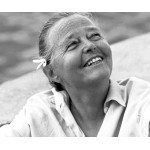 |
Charlotte Perriand full membership of that avant-garde
cultural movement which, from the first decades of the twentieth century,
brought about a profound change in aesthetic values and gave birth to a truly
modern sensitivity towards everyday life. In this context, her specific
contribution focuses on interior composition, conceived as creating a new way
of living, still today at the heart of contemporary lifestyle. In the sphere of twentieth century furnishing history,
the advent of modernity made possible the entrepreneurial audacity of this true
reformer of interior design. At the beginning of her professional career she
was acclaimed by critics for her Bar under the roof, exhibited at the Salon d’Automne
in 1927 and constructed entirely in nickel-plated copper and anodized
aluminium. In the same year, when she was just twenty-four years old, she began
a decade-long collaboration with Le Corbusier and Pierre Jeanneret, at the
famous design studios at 35, rue de Sèvres in Paris. Her presence in the Le Corbusier studio is visible in
all the furnishings designed with him and with Pierre Jeanneret: and so
Charlotte Perriand becomes a cornerstone in the reformation project promoted by
the architect, adding a distinct dimension of humaneness to the often cold
rationalism of Le Corbusier. In her creations she manages to animate the
fundamental substance of daily life with new aesthetic values: in particular
her talent and intuition in the discovery and use of new materials manifest
themselves to their full extent. The ten-year long collaboration with Le Corbusier and
Pierre Jeanneret, and her Japanese experience, represent periods of intense
creative effervescence in the life of the artist. During her long stay in the
Far East (‘40-‘46), she reveals her artistic talent to the full, through a
reinterpretation of the reality of life to echo both tradition and modernity.
By way of example, worthy of mention are the furnishings produced using
traditional bamboo processing techniques, capable of enhancing the new forms
already experimented using steel-tubing. After her work as a professional, she concentrates on
a series of original and balanced productions, commissioned by top-level
authorities and leading companies of the calibre of Air France, and by a number
of foreign organizations, authenticating the fame she had by now gained on the
international scene.
The distinguishing factor of Charlotte Perriand’s
personality is a sincere loyalty to the principles of humane and innovative
rationalism, preserved intact in her projects, on which she worked with such
passion, also in readiness for their revival in the “Cassina I Maestri”
collection. |
